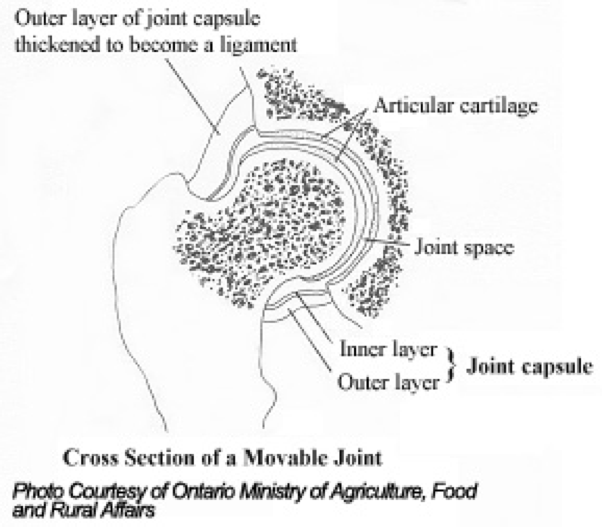Fluticasone 2 mg/mL / Amikacin 50 mg/mL Dosages & Usages

The direct administration of anti-inflammatory drugs into joints to provide relief from discomfort remains a common practice in many sectors of the equine industry. Unfortunately, many of these medications are corticosteroids, which have become controversial when used in this regard, since evidence exists that some of these can potentially damage articular cartilage, rather than protect it, masking injuries that would otherwise prevent a horse from performing and incurring further injury.1
Horse owners and managers will be well-familiar with the abundance of media (articles, advertisements, etc.) addressing the prevention and treatment of joint disease in horses. While this is typically targeted at Thoroughbred and Quarter horses, there are many other breeds that deal with joint problems, including miniature horses, breeding stallions and driving horses.2
Typical Joint Issues of Horses
Arthritis is an inflammation of a joint involving the bones, the articular cartilages, ligaments and joint capsules. In an infected or irritated joint, the amount of fluid increases and produces swelling. Complications in horses may arise when bacteria enters the joint through a wound of the joint capsule, resulting in damage to the bones and cartilages. If untreated, the joint may become immovable.2
In the case of injuries, sometimes even sprains (generally considered to be relatively minor among injuries) can result in serious complications if not treated properly. If an abnormal stress or movement is placed upon a joint such as overextension of an already compromised joint, the ligament may be torn. Joint mice are pieces of bone or cartilage found within the joint cavity that can be the result of a minor fracture. These produce pain when lodged between the articular surfaces and may also produce arthritis.3

Bone spavin is an inflammation of one or more bones of the hock and usually manifests as an arthritic condition of the affected bones. "In bone spavin, the joint between the bones on the inside of the hock become immovable. Quick stops, such as those which occur during roping and other stresses, along with mineral deficiencies, may produce bone spavin."2 More muscular horses with well-developed hocks tend to have less incidence of bone spavin than those with more slender builds. A large percentage of horses affected with blind spavin are said to recover completely.2
Traumatic joint disease in horses includes synovitis (inflammation of the fluid-producing membrane), capsulitis (inflammation of the fibrous joint capsule), articular cartilage and bone fragmentation, ligamentous tearing, and eventually osteoarthritis. In many cases, the disease process primarily involves soft tissue overuse and microtrauma to the bone surfaces, and therefore can be challenging to diagnose without diagnostic anesthesia.3
Degenerative joint disease (DJD) is a type of osteoarthritis that causes lameness in affected horses and is one of the most common causes of lameness in sport horses. DJD develops when the cartilage protecting bones of the joint is severely damaged.
This progressive deterioration of the joint cartilage represents the end stage of several other diseases, including traumatic arthritis involving the synovial membrane and joint capsule, joint fractures, traumatic damage to cartilage, osteochondritis dissecans, cysts beneath cartilage, and infective arthritis. X-rays typically evidence decreased joint space, bony outgrowths, inflammation of the muscles or tendons, and a hardening and thickening of the tissue below the cartilage.4
Diagnosis and Treatment
Aggressive treatment in joint disease is indicated to decrease soft tissue swelling and inflammation, as well as to postpone the onset of permanent osteoarthritic changes.3 Generally speaking, it is difficult to identify joint pathology by any other means than subjective examination, lameness or reports from trainers. The goal of any systemic or intraarticular (medications put directly into the joint) therapy is to stop problems before they occur, rather than waiting for abnormal radiographs. Since there is no tried-and-true method for the diagnoses of preliminary joint disease in the horse, it is important to engage the veterinarian at the first sign of lameness, as radiographic changes are often indicative of irreparable harm.2
In the case of minor conditions and sprains, reduced exercise and physical therapy are often helpful. Since some NSAlDs can cause gastrointestinal ulceration and hemorrhage and some intraarticular corticosteroids have given rise to the aforementioned concerns, agents and combinations of these drugs that relieve pain and inflammation and limit or reverse the side effects of cartilage degeneration have been widely sought in recent years.
As a result, custom compounding pharmacies have addressed the need for alternatives in this area of equine joint maladies. The glucocorticoid fluticasone, which is commonly used in veterinary medicine as an inhaled aerosol, when used in combination with amikacin, is one such formulation. Fluticasone is also widely used to treat horses with Recurrent Airway Obstruction (RAO), or heaves.
Amikacin is an aminoglycoside antibiotic that is used to treat serious gram-negative bacterial infections in horses, dogs, cats and other small animals. In particular, the effectiveness of Amikacin in infections caused by Escherichia coli, Pseudomonas sp, and Klebsiella sp has been demonstrated clinically in the horse.
The addition of amakacin serves to treat or prevent the infiltration of serious gram-negative and staphylococcal bacteria infections in horses with joint problems. In horses with severe RAO, treatment with fluticasone for 2 weeks resulted in significantly greater improvement in pulmonary function, compared with pulmonary function after treatment with prednisone or a control substance.5
1equinews.
2omafra.gov.
3aaep.org.
4equimed.com.
5American Journal of
Veterinary Research, October 2005, Vol. 66, No. 10, Pages 1665-1674
About NexGen Pharmaceuticals
NexGen Pharmaceuticals is an industry-leading veterinary compounding pharmacy, offering sterile and non-sterile compounding services nationwide. Unlike other veterinary compounding pharmacies, NexGen focuses on drugs that are difficult to find or are no longer available due to manufacturer discontinuance or have yet to be offered commercially for veterinary applications, but which still serve a critical need for our customers. We also specialize in wildlife pharmaceuticals, including sedatives and their antagonists, offering many unique options to serve a wide array of zoo animal and wildlife immobilization and anesthesia requirements.
Our pharmacists are also encouraged to develop strong working relationships with our veterinarians in order to better care for veterinary patients. Such relationships foster an ever-increasing knowledge base upon which pharmacists and veterinarians can draw, making both significantly more effective in their professional roles.
Disclaimer
The information contained in this blog post is general in nature and is intended for use as an informational aid. It does not cover all possible uses, actions, precautions, side effects, or interactions of the medications shown, nor is the information intended as medical advice or diagnosis for individual health problems or for making an evaluation as to the risks and benefits of using a particular medication. You should consult your veterinarian about diagnosis and treatment of any health problems. Information and statements have not been evaluated by the Food and Drug Administration ("FDA"), nor has the FDA approved the medications to diagnose, cure or prevent disease. Medications compounded by NexGen Pharmaceuticals are prepared at the direction of a veterinarian. NexGen Pharmaceuticals compounded veterinary preparations are not intended for use in food and food-producing animals.
NexGen Pharmaceuticals, LLC does not recommend, endorse or make any representation about the efficacy, appropriateness or suitability of any specific dosing, products, procedures, treatments, services, opinions, veterinary care providers or other information that may be contained in this blog post. NEXGEN PHARMACEUTICALS, LLC IS NOT RESPONSIBLE NOR LIABLE FOR ANY ADVICE, COURSE OF TREATMENT, DIAGNOSIS OR ANY OTHER INFORMATION, SERVICES OR PRODUCTS THAT YOU OBTAIN THROUGH THIS BLOG POST.



